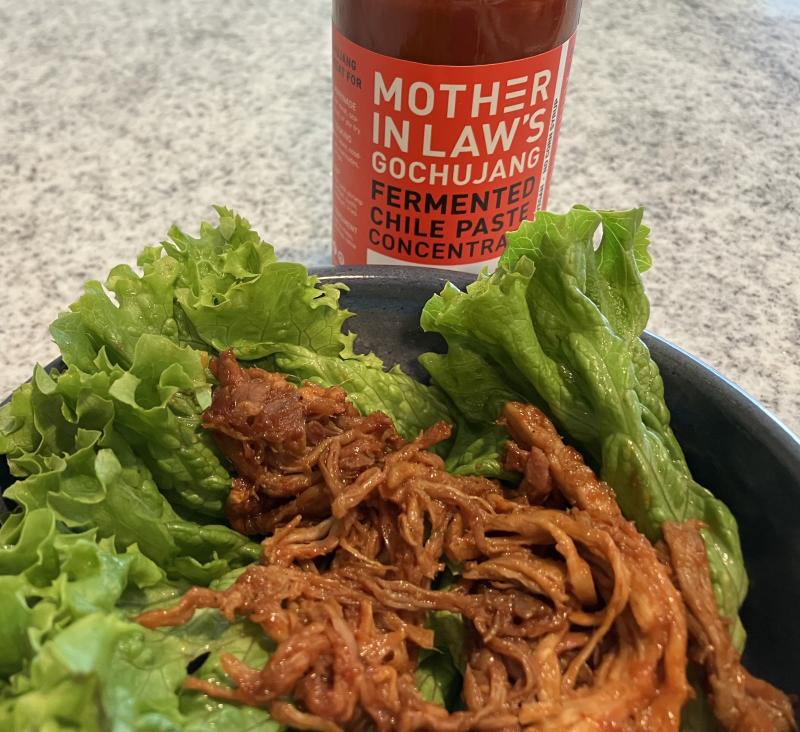Looking ahead at food trends for 2025
As I began my research for this week’s column on 2025 food trends, a few topics kept appearing. Whether the source was a news site, a consumer brand or a grocery chain, they all shared something in common: Global flavors continue to gain traction. One of the interesting analyses captured the frequency of specific online search criteria as a way to assess trends.
The most popular of these was “[food type] near me.” The blank could be filled with any number of cultures (Chinese, Italian, Greek) or food styles (vegan, healthy, fast food). The largest numbers of these searches referenced a national style, with queries about virtually every cuisine across the globe.
Another trend was reference to a food that had become popular through postings from food bloggers and influencers on popular video-sharing sites. One example was Dubai chocolate. Considered quite the luxury, it is a milk chocolate bar filled with finely shredded phyllo dough, pistachio and tahini. There were stories of people who had been scammed, thinking they were ordering the genuine article only to find they had been sent an inferior substitute.
A viral video of a person eating breakfast started another trend, the Balkan Breakfast. A man is sitting at his table taking random bites from an array of raw vegetables, cheese and bread. If you plan to try this, the components should include plenty of whole, raw vegetables, bread, cheese and sometimes pickled vegetables, cured meat and a sprinkling of salt or a dip. Ajvar, a red pepper condiment popular throughout the Balkans, is the dip of choice.
This segues nicely into a high volume of searches about several aspects of sustainability, from growing your own food to replacing takeout with home-cooked meals. A persistent trend from 2022 is something that has been dubbed the green goddess salad, made with a combination of green vegetables including peas, cucumber, avocado, kale, broccoli and basil. The mixture is dressed with a yogurt-based herb dressing that has a lot more nutritional benefits than the traditional green goddess dressing.
The key findings across the many sites I visited were that consumers maintain a strong interest in fresh fruits and vegetables, global flavors and functional, sustainable ingredients. If you look at the global component, you will discover Korean foods and spices have emerged as quite popular, beginning with a signature ingredient, the pepper paste called gochujang. In fact, its name translates as chili (“gochu”) and fermented paste (“jang.”)
You can find the paste in the specialty aisle of many groceries, as well as online. It is made from glutinous rice, fermented soybeans, red chili and salt. The flavors meld into a combination of spicy, salty and sweet with a hint of umami. Food historians believe Koreans have been fermenting this kind of paste since as early as the ninth century. The brand I used is called Mother In Law's, and it packs a nice punch.
You may also see bottles of gochujang sauce. This begins with the paste and is thinned with the addition of maple syrup, rice vinegar, sesame oil and sometimes other ingredients. Typically, recipes will instruct you how to use the paste to create a sauce, as in the Gochujang Buttered Noodles. For the lettuce wraps, you can select the protein, either shredded rotisserie chicken or pulled pork. The crisp lettuce is the perfect foil to the spicy condiment and an easy introduction to this Korean staple.
Gochujang Lettuce Wraps
Separate the leaves from the head of lettuce, keeping them intact. Rinse and dry leaves; set aside. Add the pork or chicken to a large skillet over medium-low heat. Add remaining ingredients and stir to combine. Cook, stirring often, until heated through. Arrange 2 or 3 lettuce leaves on each plate and top with seasoned protein. Yield: 2 servings.
Gochujang Buttered Noodles*
1 lb dry spaghetti
12 minced garlic cloves
6 T butter
1/4 t salt
1/4 C gochujang paste (not sauce)
1/4 C honey
1/4 C rice wine vinegar
salt & pepper, to taste
sliced scallions for garnish
Bring a large pot of water to a boil. Add the spaghetti and cook according to package instructions for al dente. Reserve 1/2 C of cooking water and drain spaghetti; set aside. Melt 4 T butter in a large, deep skillet over medium-low heat. Add the garlic and season with salt. Cook, stirring often, until the garlic starts to soften but not brown, 1 to 2 minutes. Stir in gochujang, honey and vinegar, and bring to a simmer, stirring constantly, until the mixture reduces, about 3 to 4 minutes. Remove from heat. Add cooked spaghetti and remaining 2 T butter, stirring to melt butter. If needed, add splashes of the pasta cooking water to thin out the sauce. Season to taste with salt and pepper. Top with scallions to serve. Yield: 4 servings. *Adapted from The New York Times.
























































